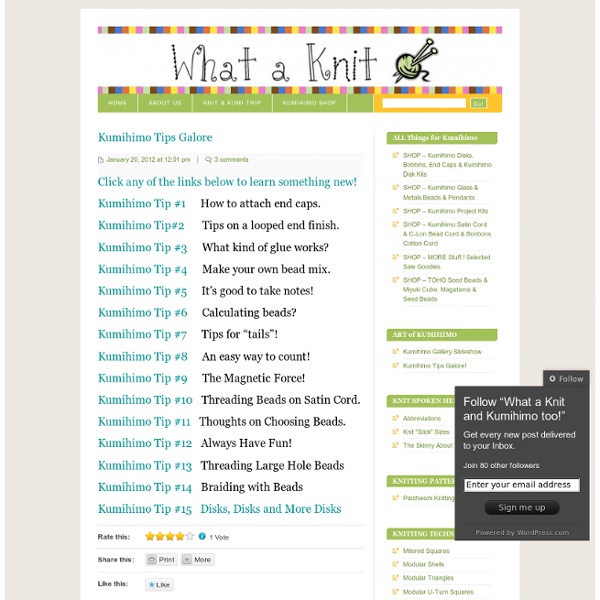



round,flat,flat on round design Individual post from "Nothing In It" While I was doing my big project earlier this year to braid all of the 16-strand braids in Jacqui Carey's "Creative Kumihimo" I noticed that most of the 8-strand braids in that book were expanded or combined into 16-strand versions, except for 8C. Now 8C is really just two 4-strand (maru yotsu) braids that link together after every three iterations. It's a great braid, currently one of my favorites, and it struck me that it should be possible to expand 8C to 16 strands, but figuring out when to do which moves was the difficulty. Anyway, I eventually sat down with pencil and paper, and I worked it out. You have to be familiar with the maru yotsu 4-strand braid for this pattern to make sense at all - For each X of crossing strands, first exchange the two strands marked with red arrows by moving them clockwise around the marudai. Here's what it looks like braided in four colors - Four Color Shippou It's very open, almost like lace or ply-splitting.
Heart Kumihimo Pattern. Friendship Bracelets. Bracelet Patterns. How to make bracelets We will need: 16 strings (13 black and 3 pink) about 20 cm longer than your wrist circumference + some for tying the bracelet. How to make a kumihimo bracelet you can take a look here. 1. 2. Save to: Comments: History The Monoyama period (1573 - 1614) is the beginning of the kumihimo of today. It evidenced change in kimono style with the introduction of a very wide ”obi” (sash) that required a narrow cord to hold it in place. The braided ”obijime” was created for this purpose. Toward the end of the Edo period (1616 - 1867), the takadai, or high braiding stand, developed into its current form, one allowing for more complex, intricate patterns to be created. Edo (later named Tokyo) became the center for kumihimo. By the time of the Meiji period (1867 - 1912) samurai culture had declined and the wearing of armor was prohibited by law. Despite this, there still is a market for expensive, exclusive hand-braided products, especially for obijime.
First Kumihimo Braid I had a go at using this Kumihimo plate the other night and found that the instructional pictographs were a bit difficult to understand. As you can see they were a bit daunting. The Kumihimo package came with five strands of synthetic yarn to start you off, and this is the first braid I did. I enjoyed it so much that I pulled 60” of gold ribbon, purple orlec and navy orlec to braid. This is a close up of the braid. Accepting this award means following some rules:1. And pass the awards on to: Charlotte at Strikke-og vevebloggen Susan at Thrums Cindie at eweniquely ewe Deanna at A Winding Thread Trapunto at The Straight of the Goods Magic Stix FibersDeborahbee at Swifter Than a Weavers Shuttle My Days Have Passed Weaving WordsDuring the 13th century, a woman weaver was called a Webster.
Kumihimo Patterns